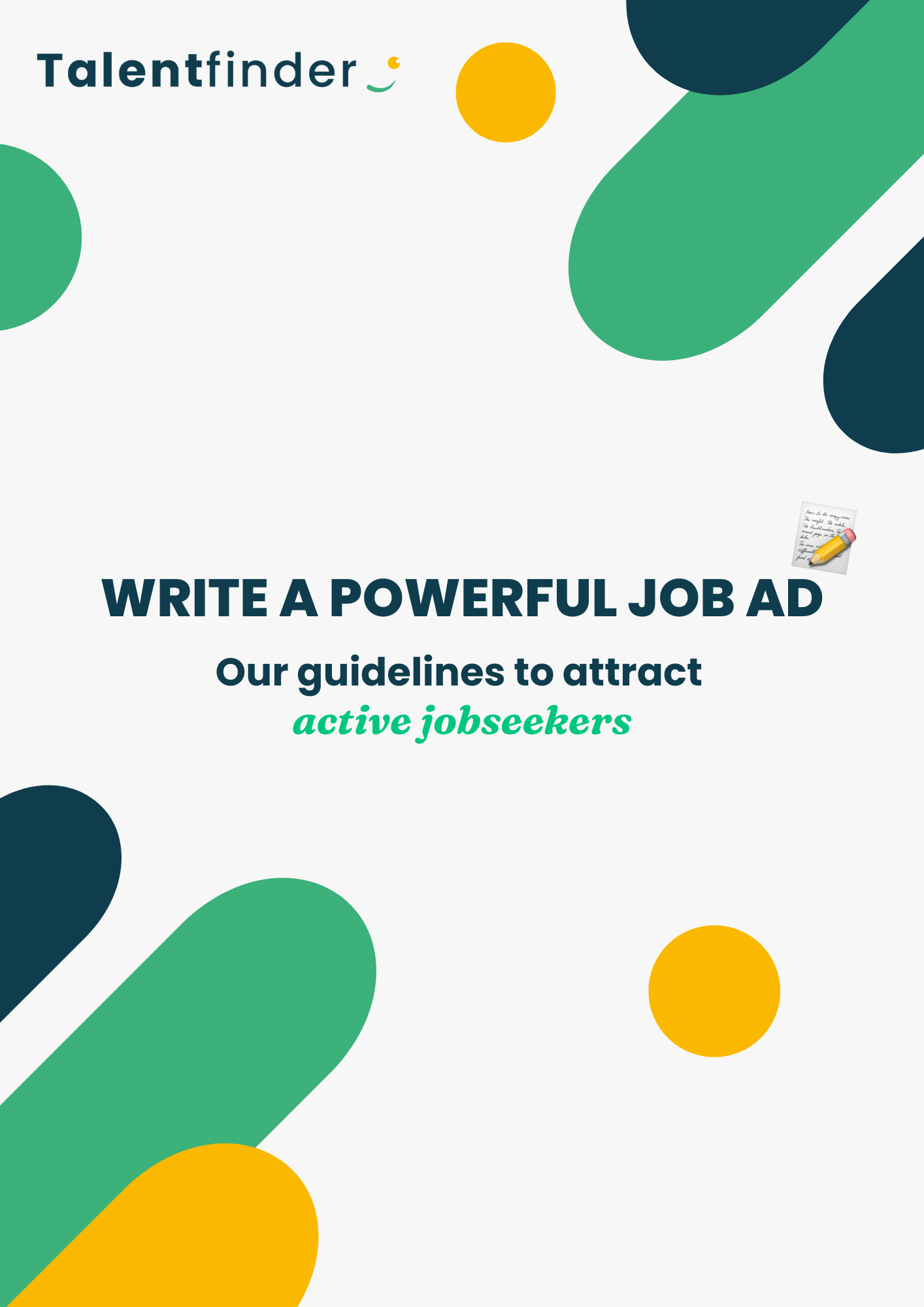
10 Recruitment strategies stolen straight from marketing
Recruitment today isn’t just about posting job ads on your website and waiting for resumes to roll in.
It’s about reaching the right candidates where they are, engaging them with content that speaks to them, and creating an experience that draws them into your company. Recruiting, much like marketing, requires strategy, creativity, and a long-term approach.
Let’s dive into the top 10 strategies that will help you recruit like a marketer!
#1: Build your Employer Brand
Your employer brand is the reputation your company has in the job market – how candidates perceive working for you. Just like a product brand, your employer brand needs to be appealing and memorable. A strong employer brand attracts top talent, sets you apart from competitors, and helps you retain your best employees.
Start by defining your Employee Value Proposition (EVP), i.e. what makes your company unique and why someone would want to work there. Consider your culture, benefits, growth opportunities, and work-life balance. Then, showcase your EVP through authentic content. You can share employee stories on social media, publish behind-the-scenes videos, or write blog posts that reflect your company’s values. Don’t forget to ensure your brand is consistent across all touchpoints – career pages, job ads, and your social channels.
#2: Write a great job ad
The job ad is often the first impression candidates have of your company, and it can make or break their decision to apply. A great job ad doesn’t just list job responsibilities- it entices the reader, highlights why the role matters, and gives them a glimpse of the company culture. You’re not just selling a job, you’re selling an experience and a big life decision.
Start by focusing on the “why” of the role: Why is it important to your organization? Why should someone want this job? Be clear about the core responsibilities and expectations but also convey the impact the role will have on your company’s mission. Avoid jargon and make sure your language is inclusive and engaging. Highlight benefits that reflect your company’s culture and values, like flexible working hours, opportunities for growth, or work-life balance. Finally, add a clear call to action: Tell candidates exactly how to apply and what to expect next in the process.
Want more details about writing great job ads?

#3: Use multiple platforms (job boards, social media, career pages)
To truly reach the widest pool of candidates, you need to distribute your job ads across a variety of platforms. Each platform has its own audience, and utilizing multiple channels allows you to expand your reach and increase your chances of attracting the right candidates.
Start by posting your job listings on job boards such as Indeed, Stepstone, LinkedIn, … and specialized niche boards for your industry.
But don’t stop there, extend your reach by posting on your social media channels (LinkedIn, Facebook, Instagram), where potential candidates are likely to engage.
Your career page is a crucial touchpoint, offering a unique opportunity to showcase your company’s personality and culture. It’s your space to get creative and engage potential candidates in a way that feels authentic to your brand. Here, you can go beyond the basics – use dynamic visuals, share employee stories, and highlight your mission and values. This is the perfect place to show what makes your company a great place to work and to set the tone for the kind of experience candidates can expect when they join your team. Don’t be afraid to make it fun and memorable!
NB: don’t forget to link your career page to your other platforms (social media, job boards, etc.)
#4: Reach the right candidates with targeted advertising

Targeted advertising takes the guesswork out of recruitment. By targeting specific demographics, job titles, or behaviors, you can ensure your job ads are seen by the candidates most likely to be a good fit for your company. This method is especially effective in reaching passive candidates who may not be actively job hunting but could be enticed by the right opportunity.
Leverage platforms like Google Ads, LinkedIn, and Facebook to run highly targeted ads. For example, LinkedIn allows you to target candidates based on job titles, skills, and company size. You can also create custom audiences based on website traffic or email lists. On Facebook, use detailed targeting options to reach specific geographic areas, interests, or demographics.
#5: Educate, engage and inspire with content marketing
By creating valuable content that educates and engages potential candidates, you can build a relationship with them before they even apply for a job. Sharing insightful content can establish your company as a thought leader and make candidates more inclined to consider working with you.
Start a blog on your company’s website that covers topics like industry trends, company culture, employee success stories, or insights into the roles you’re hiring for. Offering downloadable resources like e-books or guides related to your industry can also help attract the attention of candidates who are passively job-seeking. For example, an e-book on “Building a career in data science” could resonate with top talent in that field. The key here is consistency and value: Provide content that your ideal candidates will find useful, and it will naturally lead them toward applying for your roles.
#6: Ensure candidates can find you thanks to SEO
Just like a website needs SEO (Search Engine Optimization) to show up in search engine results, so do your job postings and career pages. When potential candidates search for roles like yours, you want your job ad to be one of the first results they see. By optimizing your job ads and career page for search engines, you increase your chances of being discovered.
Use SEO strategies to optimize your job listings by incorporating relevant keywords such as job titles, skills, and qualifications. Ensure that your career page is mobile-friendly and loads quickly, as these factors impact search rankings. Take advantage of local SEO by including location-based keywords for roles that require specific geographic knowledge. The better optimized your content, the higher it will rank, and the easier it will be for the right candidates to find you.
#7: Organize events to build face-to-face connections

In a world increasingly dominated by digital communication, face-to-face interactions still matter. Events allow you to connect directly with candidates, build relationships, and showcase your company’s culture in a personal, meaningful way. Whether you’re attending a job fair or hosting your own event, these in-person experiences can be powerful recruitment tools.
Participate in career fairs, industry conferences, and networking events where your ideal candidates are likely to be. Consider hosting your own open-house recruitment events, where candidates can meet your team, tour your office, and learn about the roles you’re hiring for. Offering branded goodies like pens, tote bags, or T-shirts at these events will ensure candidates remember you. These events give candidates a chance to experience your company culture first-hand, making them more likely to want to apply.
#8: Nurture relationships with email marketing
Keep in touch, even when you’re not hiring. Recruitment is a long-term process, and nurturing relationships with potential candidates is key to building a pipeline of talent for future roles. Candidates you meet today may not be a fit for your current openings, but they could be perfect for the next one. Building a network and staying in touch with them ensures you’re top of mind when the time comes.
Use email marketing to stay connected with candidates even when you don’t have an immediate role for them. Share industry news, company updates, or even invite them to webinars or events. Building a talent community with regular, meaningful engagement will help you stay connected and make your future hiring process easier. By nurturing these relationships, you’ll develop a strong network of talent that you can tap into when a relevant position opens up.
#9: Encourage Employee-Generated Content (EGC)
Employee-generated content is one of the most authentic and effective ways to market your company. When employees share their experiences, they offer a real, unfiltered look at what it’s like to work at your company. This can be far more compelling than anything a recruiter or HR team could say.
Encourage your employees to share their stories on social media or write blogs about their experiences at work. Have them participate in video interviews or “day-in-the-life” content that you can share on your career page or social media.
Don’t dictate the exact message or the text they should share – authenticity is the essence of EGC. It’s not about pushing your company’s agenda or crafting a message that aligns with your marketing goals. Instead, it’s about giving employees the freedom to share their own experiences and perspectives. The best EGC happens when employees genuinely want to share, not because they’re asked or required to do so. Let their voices shine through, and you’ll create more genuine, relatable content that resonates with your audience.
#10: Create a smooth candidate experience
When you shop online, you expect a seamless experience, with clear steps, reassuring details, and instant confirmation once you’ve made a purchase. You want to know what happens next and exactly when your order will arrive. Candidates browsing your job site expect the same level of clarity and engagement.
From the moment a candidate sees your job posting to their first day on the job, their experience with your company matters. A smooth, user-friendly application process and transparent communication throughout the recruitment journey will make candidates feel valued and respected. This can significantly impact their decision to join your team.
Make sure your application process is simple, intuitive, and mobile-friendly. Provide clear instructions on how to apply and what to expect at each stage of the recruitment process. Respond to applicants promptly and keep them informed throughout. Even after a candidate has applied, continue to treat them with respect by offering feedback and maintaining a positive relationship, regardless of whether they are selected.
Ready to become a marketer to recruit better?
Recruitment has evolved. It’s no longer just about filling positions but about attracting the right people through strategy, engagement, and a seamless experience. When done right, it creates a pipeline of talent that doesn’t just apply but is genuinely excited to join.
If you want to apply these techniques without the heavy lifting, we can help. With Talentboost, our fully serviced recruitment campaign, we develop for you an engaging job ad, publish it across all Belgian job boards, and you receive CVs in Talentfinder, ready to be processed.








